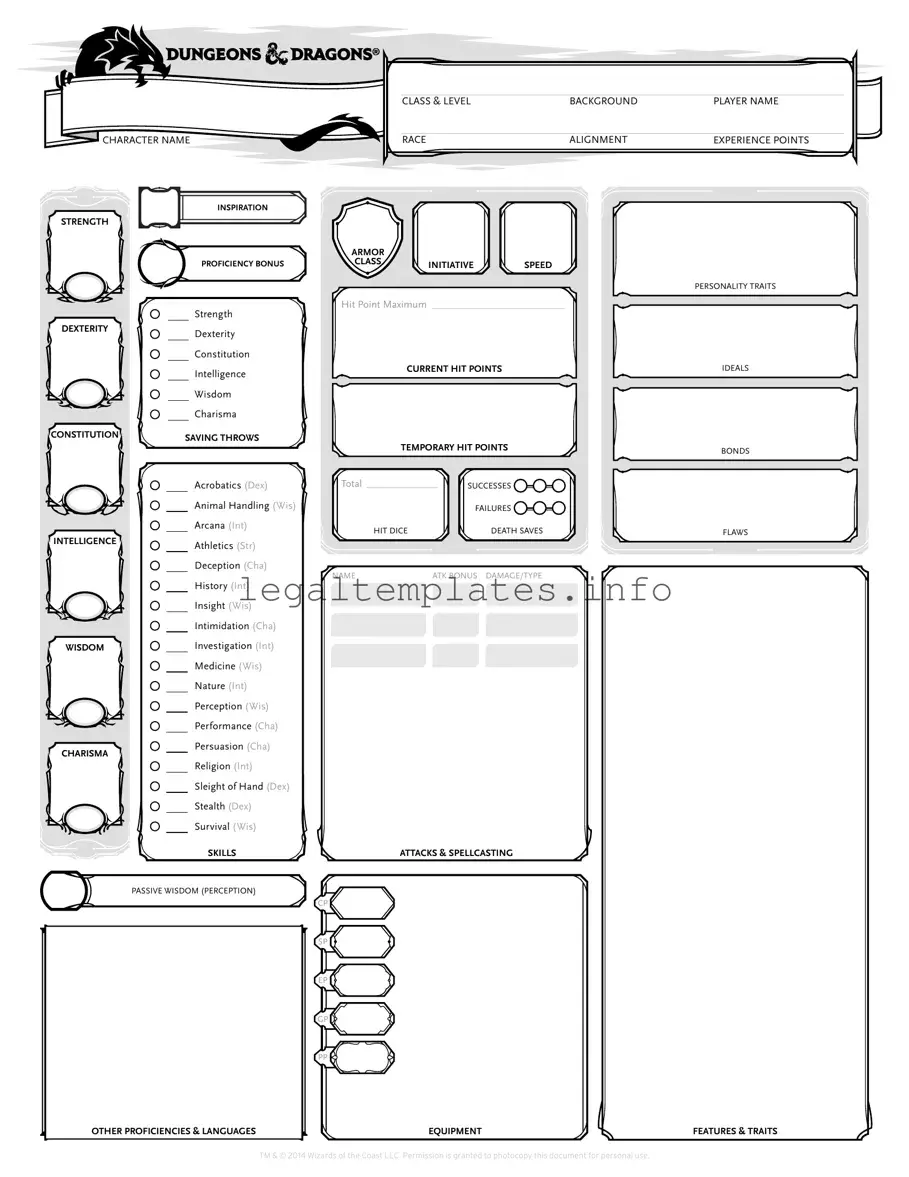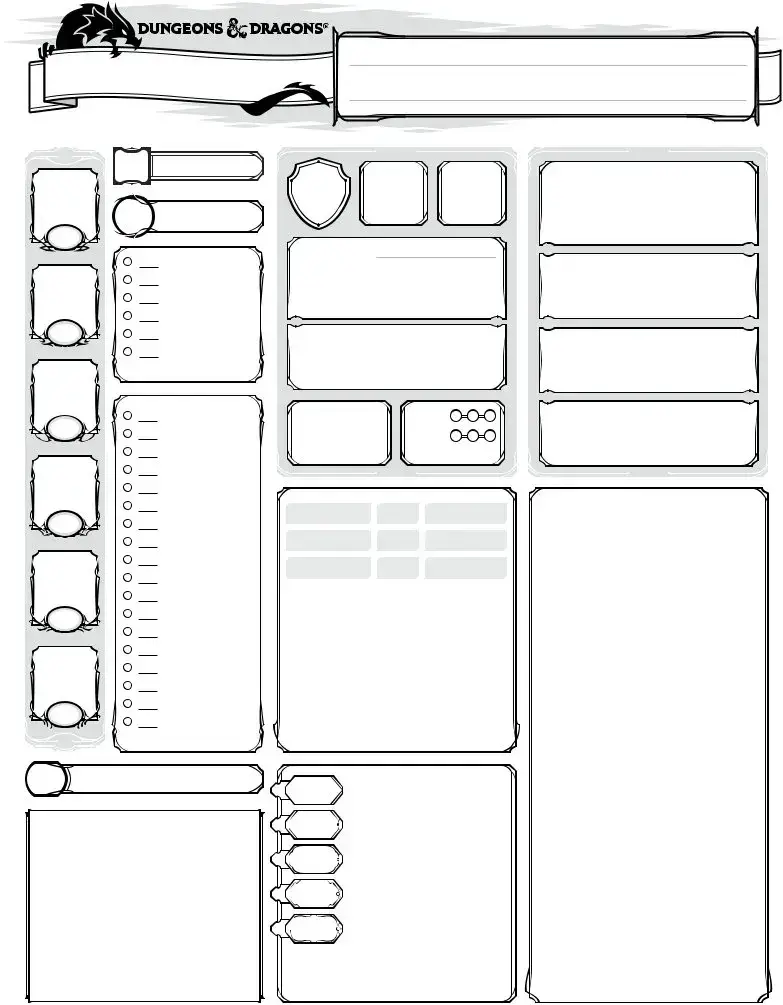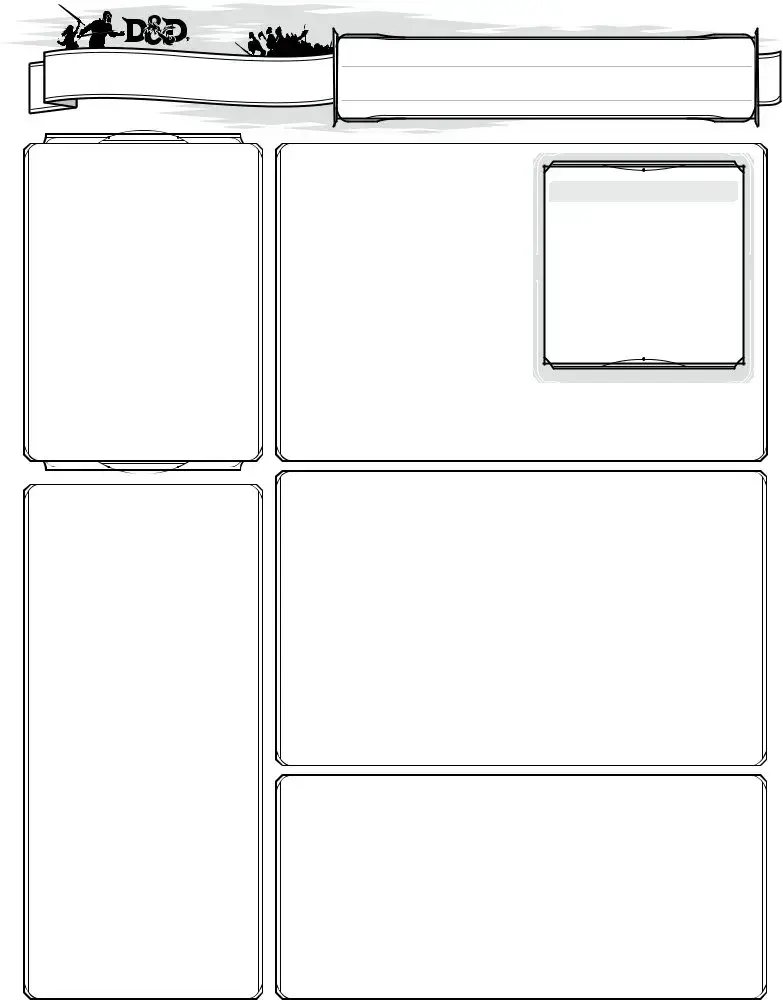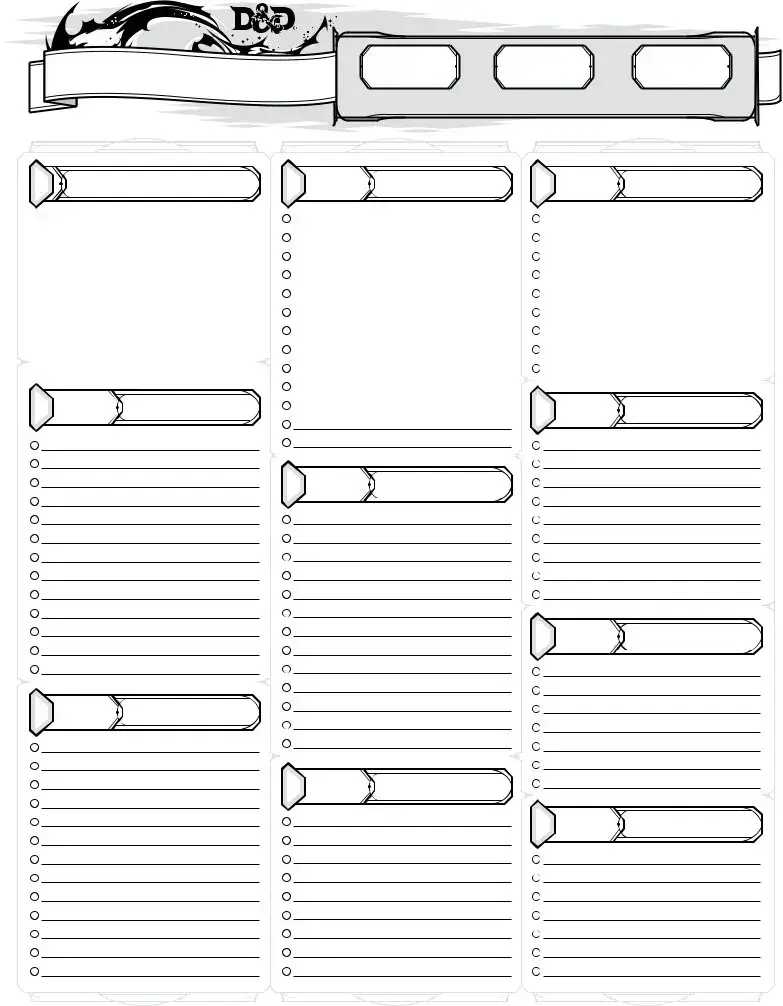What is a D&D Character Sheet?
A D&D Character Sheet is a document used by players of Dungeons & Dragons (D&D) to keep track of the essential information about their characters. This includes details such as the character's name, race, class, level, stats, equipment, and backstory. The purpose of the character sheet is to facilitate gameplay by organizing all relevant character information in one place.
How do I fill out my D&D Character Sheet?
To fill out your D&D Character Sheet, start by writing down your character's basic information, including their name, race, class, and level. Next, determine your character's ability scores (Strength, Dexterity, Constitution, Intelligence, Wisdom, and Charisma) and fill them in. Add any racial or class modifiers to these scores. Then, document your hit points, armor class, initiative, speed, weapons, spells (if applicable), and equipment. Finally, add personal details like your character's backstory, alignment, and traits. It's beneficial to consult the Player's Handbook or your Dungeon Master (DM) for guidance during this process.
Can I create a custom D&D Character Sheet?
Yes, you can create a custom D&D Character Sheet. Many players and DMs customize their sheets to better suit their play style or campaign needs. Custom sheets can include additional sections for lore, personal achievements, or campaign-specific rules. When creating a custom sheet, ensure it includes all vital information to avoid confusion during gameplay. You may use software like spreadsheet programs or specialized apps to create a digital version, or simply design one by hand.
Where can I find a blank D&D Character Sheet to use?
Blank D&D Character Sheets are available from several sources. The most official source is the Dungeons & Dragons website, which offers free downloadable PDFs of character sheets. Additionally, many third-party websites and gaming supply stores offer customized character sheets, both in digital and physical formats. Your Dungeon Master may also provide you with a blank sheet specific to your campaign's needs.
Is it possible to use a digital D&D Character Sheet?
Yes, using a digital D&D Character Sheet is possible and increasingly popular. Digital sheets can be filled out and saved on computers or tablets, making them easy to edit and share with your DM and fellow players. Various apps and websites offer digital character sheets with features like automatic calculations for ability scores and interactive fields. Some players find digital sheets more convenient for tracking their character's progress and changes over time.
What are the benefits of using a D&D Character Sheet?
Using a D&D Character Sheet has several benefits. It helps players keep track of their character's abilities, spells, equipment, and history in an organized manner, ensuring that crucial information is readily available during gameplay. Character sheets also streamline gameplay by having all pertinent details in one location, minimizing interruptions for rule checking. Additionally, they serve as a record of a character's growth and adventures over the course of a campaign.
How often should I update my D&D Character Sheet?
Your D&D Character Sheet should be updated frequently, ideally after every gaming session. This ensures that any changes to your character, such as experience points earned, spells learned, items acquired or lost, and hit point modifications, are accurately reflected. Regular updates help maintain an up-to-date snapshot of your character's abilities and resources, crucial for smooth gameplay. Your DM might also request that you submit your updated character sheet between sessions for their records.













